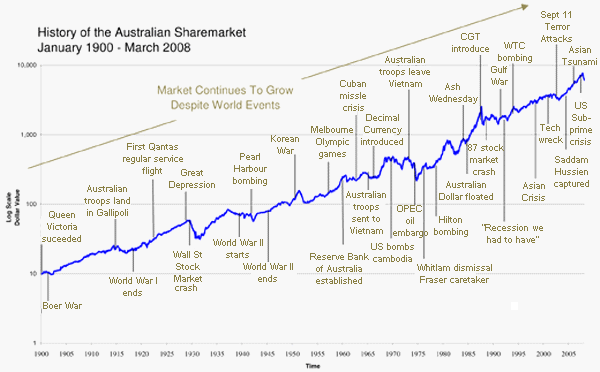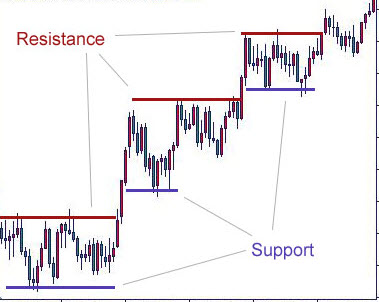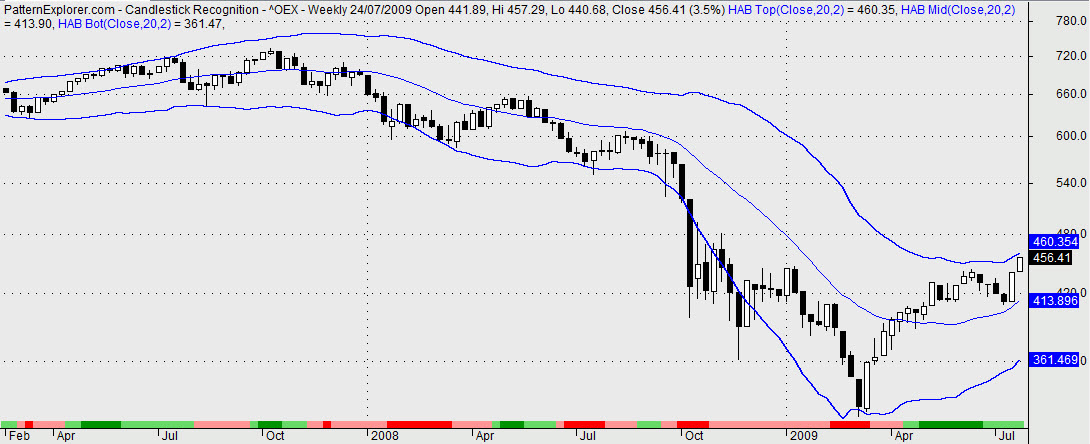Which direction do you think the Stock Market will go next…
As stock market traders, we are forever trying to predict what will happen next on the Stock Market Chart by analyzing some form of Stock Market History. It is our window to the future…
There are many different methods to uncover clues to where price action will head next, and nearly all compare past historical stock market data with more recent data on some level, whether it be Fundamental or Technical point of view.

You can never know exactly what the price action will be in the future, though understanding stock market history is important, because it has habit of repeating itself on many levels. This is mainly because the market, or the traders within the market, are all driven by the two main emotions of Fear & Greed. Coupled with the fact many fund managers and traders all use the similar Fundamental or Technical Analysis ideology, so it becomes a bit of a self fulfilling prophecy.
Market reactions to economic events, stock market events, world events & price cycle patterns tend to be similar in nature because they are driven by human emotion & thought.
3 Ways to use Stock Market History to your advantage.
Finding Long Term Support and Resistance
Searching through historical price action for some Long Term Support and Resistance, can be handy information to know when making your trading decisions.
 This can be done by reviewing the longer time-frame charts like a weekly or monthly charts, and marking in Support and Resistance lines at the appropriate levels.
This can be done by reviewing the longer time-frame charts like a weekly or monthly charts, and marking in Support and Resistance lines at the appropriate levels.
The use of Fibonacci Retracement Lines, Trend Lines and Moving Averages can also shed some clues.
When support or resistance is made on the weekly or monthly time-frame it tends to have more significance and is usually harder for price to break through.
Sometimes taking a step back and viewing the price action in a broader time-frame can help you become aware of these long term support and resistance lines. This knowledge can help you take advantage with positions approaching these significant areas, or even avoid entry in some cases.
Understanding Price Cycle Patterns
Using Stock Market Historical Charts to gain a greater understanding of how price action behaves during different market environments can give you a heads up, so you are ready to act to what is expected to happen next, rather being rear-view trader and reacting to what has already happened.

For example if you want to be good at finding the bottom of a Bear Market, its a good idea to go back in stock market history and study the price charts of Bear Markets of years gone by. You may see certain price patterns which form and maybe a tell-tale clue or two.
Back Test your New Trading Systems
When creating or testing your own Trading System, its a great idea to back-test it with past historical stock market data, to give you an indication of each systems potential. Charting Software these days can tell you a great deal about what each trading system brings to the table, before you invest any money.
Some of the useful information you can glean are: Win to Loss Ratio, Net Profit %, Risk to Reward Ratio & Maximum Draw-down.
This method may require some technical knowledge on how to write your trading system entry and exit criteria in code, but it is worthwhile so you can tweak & evaluate your trading method before investing any money, and it can save loads of time scanning for new trades too.
So there you have it, 3 great ways to use Stock Market History to your advantage and to improve your trading. Happy Trading.
Cade Arnel
Trend Hunter
www.globaltrendtraders.com 2009-2010

Hi Cade
Your post about 3 Ways to use Stock Market History to your advantage is really interesting. It gives me some great ideas on what to look at.
Hi Tania,
Glad you got some value from the article.:-)
Hi Cade,
News traders are often advised to review historical information – I really like the way you’ve taken this one step further and explained how to use this historical information. Your blog is a great resource for active and aspiring traders.
Caroline
Hi Caroline,
Yes, using Stock Market History can be used as an important part of a stock market traders armoury. It will definately increase a traders awareness, for sure.
Glad you found the article helpful.
Hello Cade,
I am not into the stock market because all the charts roll over my head (too confusing!!) but I try to understand bits of what my hubby tells me…he loves the stock market 🙂
Your post Stock Market History – 3 ways to use it to your advantage sure is interesting, with great pictures and you make sense with your easy to understand break down of how the stock market could trend 🙂
Cheers
Lisa
Hi Lisa – Glad you liked the Stock Market History post
Interesting read Cade.
I’ve always been a bit apprehensive about the Stock Market, however I can see how looking at the Stock Market History is an important ingredient in success.
Ultimately, it come down to educating yourself, and Global Trend Traders is a great resource to help you.
Thanks for this information. Looking at the stock market history before putting on any trade is a good idea. I usually look at the years high and low before making a decison.